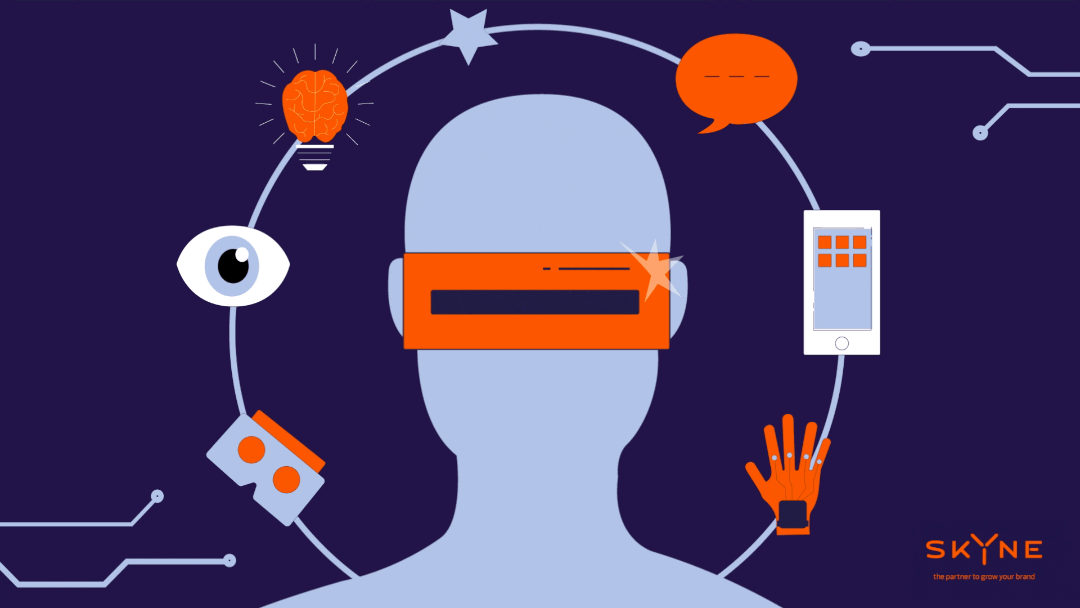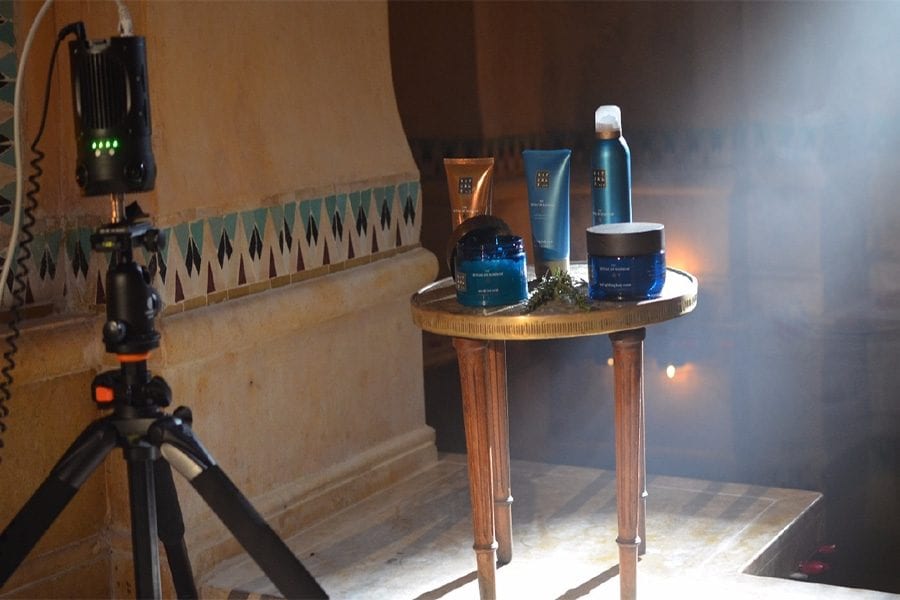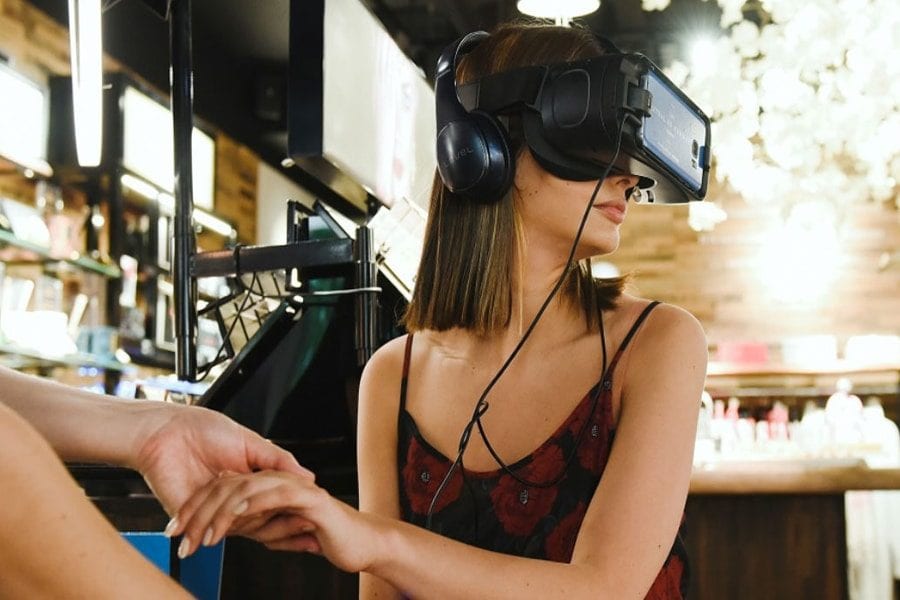
We, at Skyne, have created unique customer journeys and touch-points by developing brand experiences that truly stand out, making every interaction with the brand noteworthy.
Although, while creating stand out experience design for our partners, we noticed an interesting point of agreement between them. A perception exists where it is believed that the ubiquitous implementation of VR/AR is a distant reality, not an immediate future.
However, the reality of what we see around us may prove to be quite different and surprising.
What actually is VR and AR?
VR (Virtual Reality) and AR (Augmented Reality), may seem like the new buzzwords of today, floating around or popping up in discussions about technological evolutions or digital trends.
However, tracing their origins, you might be surprised to find them lead you all the way back to the 1990s. With early video game consoles utilizing VR capabilities and AR even being implemented in NASA’s spaceflight navigation.
Unmistakably, VR and AR has come a long way from its original intent. Virtual reality, in a sentence, can be described as replacing your current reality with a virtual one, through stimulating senses and evoking emotions. More technically, it is essentially a computer-simulated world, space or environment that consists of animated 3D models, a 3D scan, a 360-degree video of an existing place, or a combination of these elements.
Augmented Reality, although the same nature of technology, lies on the other side of the spectrum. Here, instead of simulating your reality it complements it. Putting a “filter” or digital layer over one’s reality. This layer can consist of textual information or visual elements, such as videos, animations etc.
With such applicable and transformative abilities of the technology, it is no wonder that AR and VR are rapidly being implemented industry wide from healthcare services and education tools to travel planning and logistics capabilities.
How product marketing has successfully utilised VR technology
One such avenue where VR/AR technology has seen an expeditious rise is towards being a tool for marketing and sales. A phenomenon that is gaining quite the traction with industry experts and big brands incorporating VR/AR capabilities to reach their audience. Successful applications of these can be seen happening all around us. Evolving and growing from previous iterations of the technology.
Specifically we see a surge of this in product marketing. When Rituals, an international beauty brand from the Netherlands, wanted to showcase an authentic experience to their global shoppers, they went to Morocco. Here a traditional Hammam (bathing house) was recorded as a 360 experience with their products, which was then launched across their outlets all over the world. Giving visitors the opportunity to wear headsets and get a complete feel of an authentic bath house while in store.


Source: Freek Teunen from VR Owl
A similar opportunity arose with Mont Blanc, who planned on doing something unique for the reveal of their new Summit Smartwatch 2. Reaching out towards social influencers, and co-creating content for their 360 video, launching the content at the same time as the watch. Thus, using VR effectively to expand their reach and their audience.


Source: Freek Teunen from VR Owl
Product marketing has slowly but surely been transformed by VR capabilities, with consumers increasingly preferring to experience the product digitally before making a purchasing decision. Companies have doubled down on this need by creating specific content to reach out to their audience.
How Coca Cola used VR to strengthen their core brand message
One of the ways they are doing this is by taking VR directly to them. As we see with the case of Coca Cola’s venture to keep the magic of Christmas alive. Following their theme of happiness Coca Cola created a VR experience that would go around Germany, bringing the magic of Christmas with them. A VR experience was demonstrated over the course of a month in a bus. Giving people the ultimate Christmas experience by allowing them to step into the sleigh on the back of one of the busses and put on a virtual reality headset to take the journey through a winter wonderland.
Demonstrating how VR could also be a strong campaign enabler allowing one to reinvigorate the brand’s message in the hearts of people.


Source: Freek Teunen from VR Owl
AR used as the first touchpoint in a customer journey
With the case of AR, there is less immersion into the realm of a different reality and more of an incorporation into your current one. For sales and marketing we see this happen quite often where visualisations in a space help sell a product or service more effectively.
JBL’s new Soundbar Speaker is a great example of this implementation. By focusing on not just telling you how the product works but showing you how it would look in your home as well. An ideal tool for customers compatible with their phones. It allows them to visualise through their phone screen the dimensions and space the speakers would occupy before actually purchasing it. A similar technique is being employed by a number of paint and coatings industry leaders. Through building AR apps for color visualising, they allow people to see what their own walls would look like with different paint colours and textures, even before they have stepped into a paint shop.

Source: Freek Teunen from VR Owl
VR and AR: not as far as it seems
VR and AR implementation seems almost like the next logical step in marketing and sales, an arena where consumers would rather feel and touch and experience things themselves rather than be told what they need to buy. It speaks to a greater trend shift in consumer thinking, where the adoption of this technology is no longer met with apprehension by consumers. Customers are more likely now than ever to embrace the use of digital technologies, especially if it allows them to make better informed decisions about where they spend their money.
